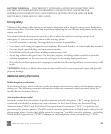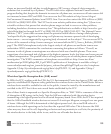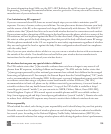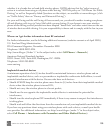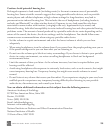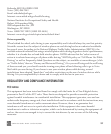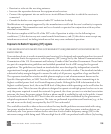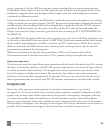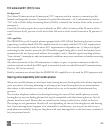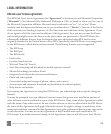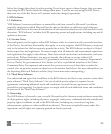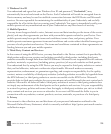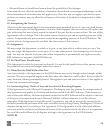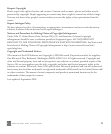
ONEm User Guide - R1.0.2 - October 20, 2010 110
FCC enhanced 911 (E911) rules
Background
The Federal Communications Commission (FCC) requires wireless carriers to transmit specific
latitude and longitude location (Automatic Location Identification = ALI) information as well as
“911” calls to Public Safety Answering Points (PSAPs) to identify the location of the caller in case of
emergency.
Generally, the rules require that carriers identify an E911 caller’s location within 50 meters of the
actual location for 67 percent of calls and within 150 meters of the actual location for 95 percent of
calls.
ALI capability
The PB10ZUM is an ALI-capable phone equipped with a GPS (Global Positioning System) receiver
supporting a satellite-based GPS ALI-capable network to comply with the FCC’s ALI requirements.
The network compliance with the above FCC requirements is dependent on: (a) the use of digital
technology by the wireless network; (b) GPS satellite signals being able to reach the handset (such
transmissions do not always work indoors, for example); and (c) handset signals reaching wireless
“base stations” (atmospheric and environmental conditions may cause variations in handset receiving
signal strength).
Also the transmission of the ALI information is subject, in part, to system constraints within the
wireless network to which the E911 signal is transmitted and over which Personal Communications
Devices, LLC has no control.
Finally, customers are advised that the PB10ZUM ALI capability is to be used for E911 purposes only.
Hearing aid compatibility with mobile phones
When some mobile phones are used near some hearing devices (hearing aids and cochlear implants),
users may detect a buzzing, humming, or whining noise. Some hearing devices are more immune
than others to this interference noise, and phones also vary in the amount of interference they
generate.
The wireless telephone industry has developed ratings for some of their mobile phones, to assist
hearing device users in finding phones that may be compatible with their hearing devices. Not all
phones have been rated. Phones that are rated have the rating on their box or a label on the box.
The ratings are not guarantees. Results will vary depending on the user’s hearing device and hearing
loss. If your hearing device happens to be vulnerable to interference, you may not be able to use a
rated phone successfully. Trying out the phone with your hearing device is the best way to evaluate it
for your personal needs.



